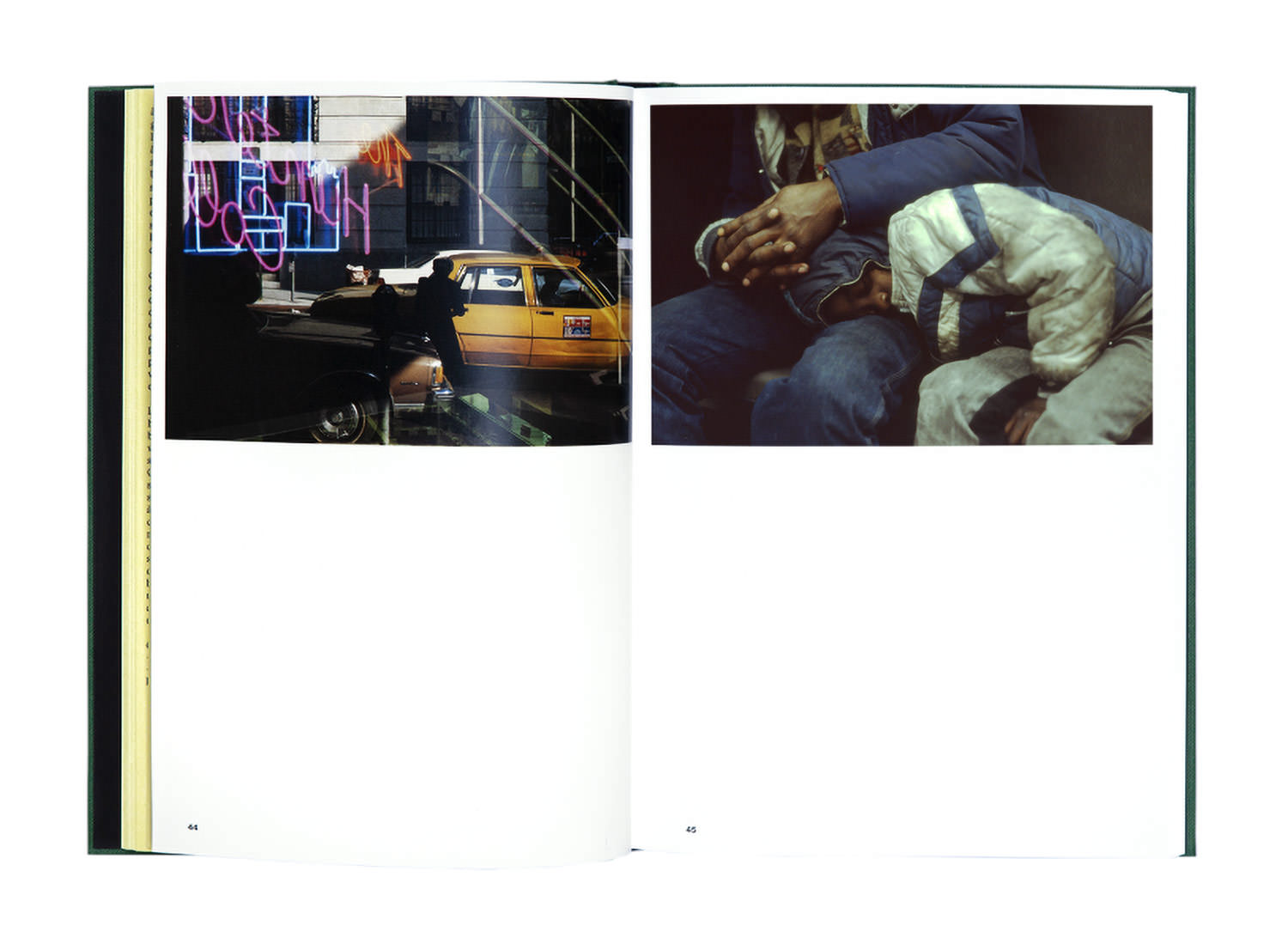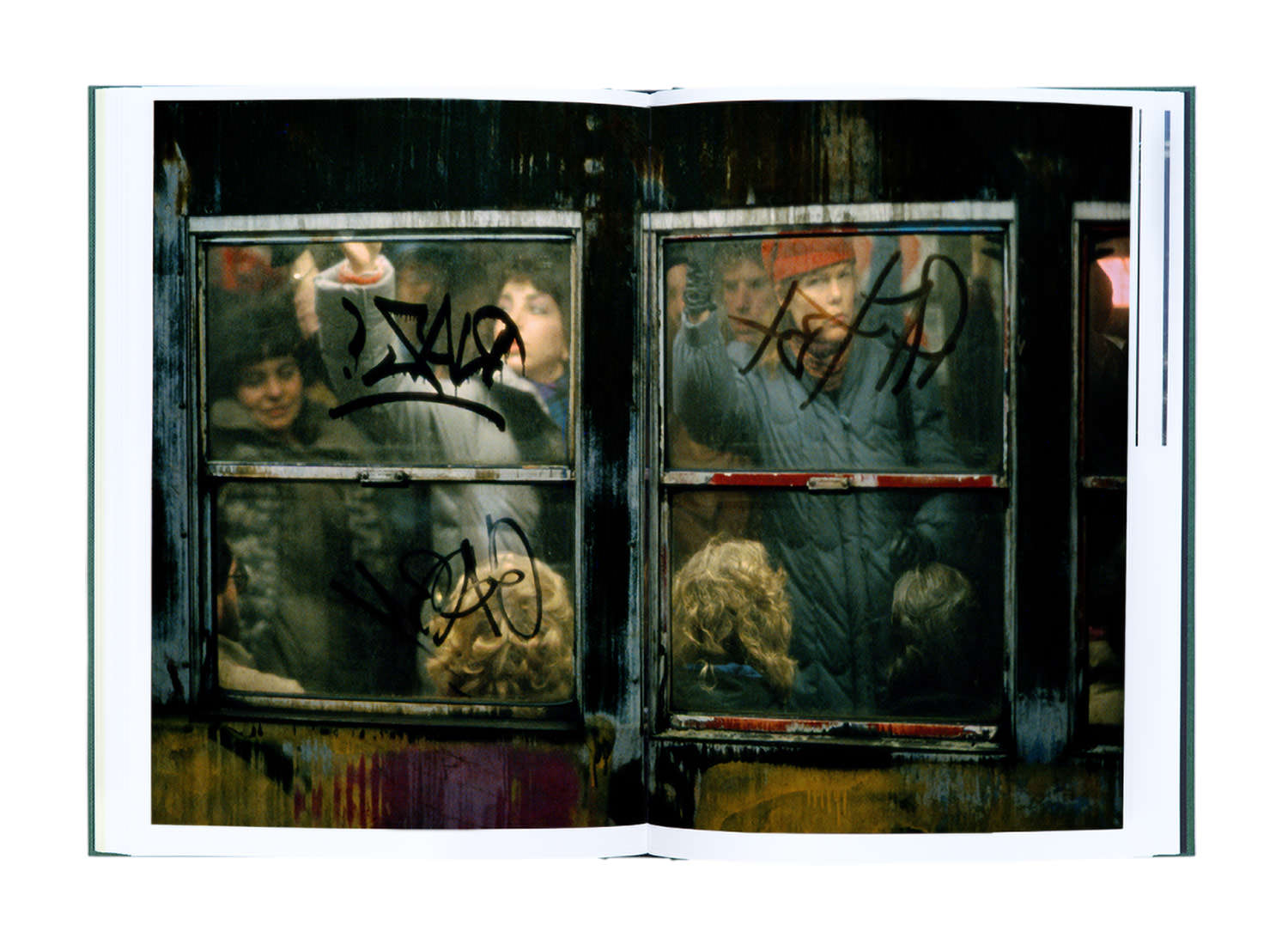 |
Side Walk. By Frank Horvat.
|
Photographs by Frank Horvat
Hatje Cantz, 2021. 160 pp., 90 illustrations, 9½x7x¾".
If the name Frank Horvat conjures a hazy impression, you’re not alone. Although one of the most respected photographers of his generation, Horvat’s identity is something of a cipher. An Italian citizen born in Croatia who spent most of his career in France, he bounced around enough countries to gain fluency in four tongues. When it came to the language of photography he was a veritable tower of Babel, flitting between portraiture, journalism, landscape, street candids, commercial, and everything in between, including the fashion work for which he is perhaps best known.
Horvat was barely into his twenties when he became friendly with Henri-Cartier-Bresson and Robert Capa. Although he never achieved their name recognition, the connection helped garner his membership into their esteemed Magnum agency, which he left after just 3 years. A poor fit with his affinity for studio staging, apparently. He was included in The Family of Man exhibition, published dozens of books, shifted between monochrome and color, lost most of his sight in one eye, and pioneered the early era of digital photography, eventually creating the eponymous phone app Horvatland. By the time of his death, last year at 92, his legacy was marked by restless creativity and a refusal to be pinned down or pigeonholed.
 |
Among Horvat’s many deep dives was an extended study of New York City between 1982 and 1986. Horvat did not live there full time. Instead, he devoted his occasional stays to street shooting ventures, a week or two here and there, as they fit his schedule. Over the course of 5 years, he built a thick archive of city street life. The rough intention was for an exhibition and book, but, as often happens with photo projects, one thing after another got in the way. Eventually, his New York photos slipped entirely through the sidewalk cracks of time. It would take 3 decades for New York Up & Down to eventually surface in 2018, at Gallery Fifty-One in Antwerp. Another exhibition venue was planned for Paris in 2020, in conjunction with a book to be called Side Walk. Horvat sadly passed away in October 2020, just 5 days before its publication.
One imagines that Horvat would’ve been proud of Side Walk. It is a small tour de force of a monograph, packing 90 pictures into a tidy green package. Collectively, they serve as a sort of time machine. They open a window into the seedy Big Apple of the early 1980s, as well as Horvat’s thoughts on the city and photography in general. Horvat had a peripatetic’s view of New York, and he knew it. His charge was not to channel familiarity but to stake out an alien objectivity. “How best to convey my disorientation?” he mused. “It’s the eternal problem for photographers.”
Side Walk’s nostalgic subtext is boosted by Horvat’s choice of materials. He shot the series in Kodachrome, still popular and widely available at the time. The film’s singular palette is captured perfectly in the reproductions by Hatje Cantz. Set into the upper halves of the pages, Horvat’s pictures glow with a rich contrasty zest, marching in step with the gritty quirks of bygone Manhattan. Perhaps less noticeable but equally important is Horvat’s choice of a 85 mm lens for the project. For the type of found-moment candids he was hunting, this is an unusually long lens. Most street photographers then and now prefer the flexibility and informal interactivity of something 35 mm or wider. Honed by years of studio work, Horvat’s choice has some pretext, but is still a conscious rebuttal to orthodoxy. So be it. He was in his late 50s and had just lost sight in one eye. It was time to slow down and hunt carefully.
One imagines that Horvat would’ve been proud of Side Walk. It is a small tour de force of a monograph, packing 90 pictures into a tidy green package. Collectively, they serve as a sort of time machine. They open a window into the seedy Big Apple of the early 1980s, as well as Horvat’s thoughts on the city and photography in general. Horvat had a peripatetic’s view of New York, and he knew it. His charge was not to channel familiarity but to stake out an alien objectivity. “How best to convey my disorientation?” he mused. “It’s the eternal problem for photographers.”
Side Walk’s nostalgic subtext is boosted by Horvat’s choice of materials. He shot the series in Kodachrome, still popular and widely available at the time. The film’s singular palette is captured perfectly in the reproductions by Hatje Cantz. Set into the upper halves of the pages, Horvat’s pictures glow with a rich contrasty zest, marching in step with the gritty quirks of bygone Manhattan. Perhaps less noticeable but equally important is Horvat’s choice of a 85 mm lens for the project. For the type of found-moment candids he was hunting, this is an unusually long lens. Most street photographers then and now prefer the flexibility and informal interactivity of something 35 mm or wider. Honed by years of studio work, Horvat’s choice has some pretext, but is still a conscious rebuttal to orthodoxy. So be it. He was in his late 50s and had just lost sight in one eye. It was time to slow down and hunt carefully.
 |
Perched along downtown sidewalks at middle distance, Horvat found a New York that was downcast and bleak, yet irrepressible, with a heart of gold beating just below the surface. Shooting mainly in the evenings or in dank subways and diners, Horvat formed a dark and elemental scape. Colors pop against austere backgrounds. He shot often during winter snow or rain, obliterating any promise of good light. Even his pictures captured at mid-day linger in a sort of dusky umber, as if portraying a shadow world with no clear prospects for the sun. Subjects such as graffiti, homelessness, dumpsters, and puddles convey a city that felt spent and tired. One thinks of the infamous headline “Ford To City: Drop Dead”, or of Bruce Davidson’s subways or Martha Cooper’s graffiti, marking a dingy timeline of the period. Saul Leiter’s sense of composition and color also comes to mind, as does Ernst Haas. But Horvat’s New York reveals a more dour take than any of these reference points.
Side Walk’s photographs are fascinating on their own, but they are given substantial heft by the opening texts, distinguished by the yellow Munken offset paper they are printed on. Amos Gitai’s introduction drifts in a poetic haze before seamlessly transitioning into a Q & A with Horvat. Great stuff, but even better is the section that follows, which quotes long sections of Horvat’s diary entries written during his New York ventures. Like a Gotham-flavored version of The Daybooks, they rummage through various thoughts and subjects, musing on photography, life, and philosophy. Entries churn casually through daily tasks while tossing off aphorisms like “the impact of a photograph can be increased by what we know about it”, “The core point of photography as art… is that the composition transforms the individual phenomenon into a universal one” and “Photography is the art of not pushing the button.” As for Garry Winogrand? “The American photographer I don’t like very much,” writes Horvat. “His Russian name escapes me for the moment.”
Not much else escaped Horvat’s attention. Side Walk shows a keen eye, a steady hand, and years of photographic experience. All gelled nicely in Horvat’s later years to form this exquisite body of street candids.
Purchase Book
Read More Book Reviews Purchase Book
Read More Book Reviews Blake Andrews is a photographer based in Eugene, OR. He writes about photography at blakeandrews.blogspot.com.
Blake Andrews is a photographer based in Eugene, OR. He writes about photography at blakeandrews.blogspot.com.
Not much else escaped Horvat’s attention. Side Walk shows a keen eye, a steady hand, and years of photographic experience. All gelled nicely in Horvat’s later years to form this exquisite body of street candids.
Purchase Book
Read More Book Reviews Purchase Book
 |
Read More Book Reviews
 Blake Andrews is a photographer based in Eugene, OR. He writes about photography at blakeandrews.blogspot.com.
Blake Andrews is a photographer based in Eugene, OR. He writes about photography at blakeandrews.blogspot.com.










